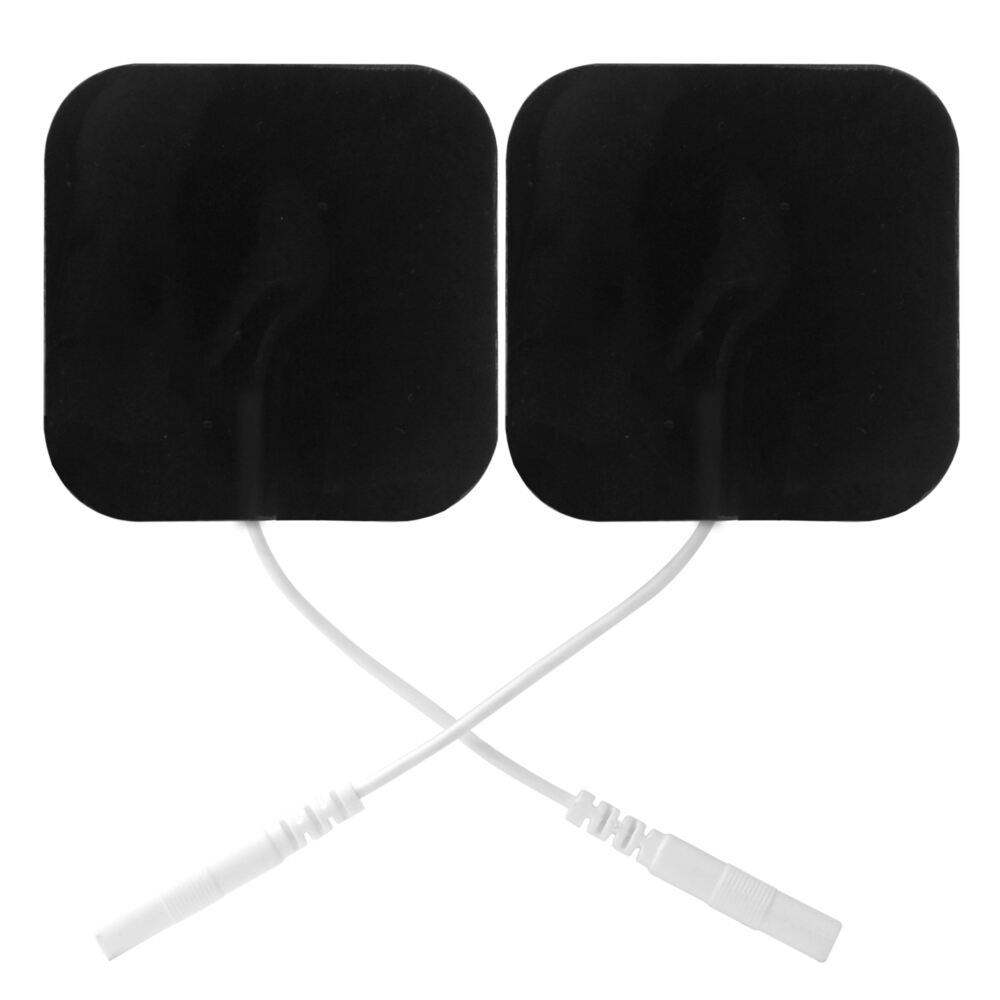Pain management has evolved significantly in recent years, with electrode patches emerging as a revolutionary solution for individuals seeking non-invasive, drug-free relief. These innovative medical devices utilize transcutaneous electrical nerve stimulation technology to interrupt pain signals before they reach the brain, offering targeted relief for various conditions including chronic back pain, arthritis, and muscle soreness. As we enter 2025, the market for electrode patches has expanded dramatically, presenting consumers with numerous options that vary in design, functionality, and therapeutic effectiveness.
The growing demand for alternative pain management solutions has driven significant innovation in the electrode patch industry. Healthcare professionals increasingly recommend these devices as first-line treatments for chronic pain conditions, particularly given their minimal side effects compared to pharmaceutical interventions. Modern electrode patches incorporate advanced materials, improved adhesion technology, and sophisticated stimulation patterns that deliver precise therapeutic benefits while maintaining user comfort throughout extended treatment sessions.
Understanding Electrode Patch Technology
Mechanism of Action
Electrode patches function through the gate control theory of pain, which suggests that non-painful electrical stimulation can effectively block pain signals transmitted through the nervous system. When properly positioned on the skin, these devices generate controlled electrical impulses that activate large-diameter nerve fibers, creating a competitive inhibition effect that prevents pain signals from reaching the spinal cord and brain. This neurological mechanism provides immediate relief without requiring systemic medication or invasive procedures.
The electrical stimulation parameters delivered by modern electrode patches are carefully calibrated to ensure optimal therapeutic outcomes while maintaining user safety. Advanced devices feature multiple stimulation modes including continuous, burst, and modulated frequencies that can be adjusted based on individual pain patterns and treatment requirements. These sophisticated control systems allow users to customize their therapy sessions according to their specific condition severity and personal comfort preferences.
Material Composition and Design
Contemporary electrode patches utilize advanced hydrogel compositions that ensure superior conductivity while maintaining gentle skin contact throughout extended use periods. These materials are specifically formulated to prevent skin irritation and maintain consistent electrical transmission even during physical activity or exposure to moisture. The substrate materials are designed for optimal flexibility, allowing the patches to conform naturally to body contours while maintaining secure adhesion.
The design evolution of electrode patches has focused heavily on user convenience and treatment effectiveness. Modern patches feature low-profile configurations that remain discreet under clothing, wireless connectivity options for smartphone control, and extended battery life that supports multiple treatment sessions. These design improvements have significantly enhanced patient compliance and treatment outcomes across various demographic groups.
Clinical Applications and Therapeutic Benefits
Chronic Pain Management
Chronic pain conditions represent the primary application area for electrode patches, with extensive clinical research demonstrating their effectiveness across multiple pain syndromes. Patients suffering from fibromyalgia, osteoarthritis, and chronic lower back pain have reported significant improvement in pain scores when using electrode patches as part of comprehensive treatment protocols. The ability to provide continuous pain relief without systemic side effects makes these devices particularly valuable for long-term pain management strategies.
Healthcare providers increasingly prescribe electrode patches for patients who cannot tolerate traditional pain medications or prefer non-pharmacological treatment approaches. Clinical studies have shown that regular use of electrode patches can reduce reliance on opioid medications while maintaining comparable pain relief levels. This therapeutic approach addresses growing concerns about medication dependency while providing patients with an active role in managing their pain symptoms.
Acute Injury Recovery
Acute injuries including muscle strains, joint sprains, and post-surgical recovery benefit significantly from electrode patch therapy. The immediate pain relief provided by electrical stimulation helps reduce inflammation and promotes faster healing by improving local blood circulation. Sports medicine professionals routinely incorporate electrode patches into rehabilitation protocols, recognizing their ability to accelerate recovery timelines while minimizing the risk of re-injury.
Post-operative pain management represents another crucial application where electrode patches demonstrate exceptional value. Surgical patients using these devices often experience reduced pain intensity, decreased inflammation, and improved mobility during recovery periods. The non-invasive nature of electrode patch therapy makes them ideal for patients who may have contraindications for certain pain medications or prefer to minimize pharmaceutical interventions during healing.
Selection Criteria for Optimal Pain Relief
Stimulation Parameters and Customization
Selecting appropriate electrode patches requires careful consideration of stimulation parameters including frequency range, intensity control, and program variety. Devices offering broad frequency ranges typically provide more versatile treatment options, allowing users to find optimal settings for their specific pain conditions. Advanced electrode patches feature multiple pre-programmed modes designed for different pain types, from sharp nerve pain to deep muscle aches.
Customization capabilities significantly impact treatment effectiveness, with premium electrode patches offering user-programmable settings that can be adjusted based on daily pain variations. The ability to modify stimulation parameters enables users to adapt their therapy as their condition improves or changes over time. This flexibility ensures sustained therapeutic benefits and prevents tolerance development that can occur with static treatment protocols.
Battery Life and Portability
Battery performance directly impacts the practical utility of electrode patches, particularly for users requiring extended treatment sessions or multiple daily applications. Modern devices feature rechargeable lithium batteries that provide 8-12 hours of continuous operation, ensuring uninterrupted therapy throughout work days or extended activities. Rapid charging capabilities allow users to quickly restore battery power during brief breaks in treatment.
Portability considerations extend beyond size and weight to include durability and weather resistance. High-quality electrode patches maintain functionality during physical activity, exposure to moisture, and temperature variations commonly encountered in daily life. These robust design features ensure consistent therapeutic delivery regardless of environmental conditions or activity levels.
Safety Considerations and Best Practices
Proper Application Techniques
Correct electrode patch placement is essential for both safety and therapeutic effectiveness. Users must thoroughly clean and dry the application site before attachment, ensuring optimal adhesion and electrical conductivity. The patches should be positioned according to manufacturer guidelines, typically placed on either side of the pain area to create an effective electrical field that encompasses the affected tissues.
Skin preparation protocols help prevent irritation and ensure consistent treatment outcomes. Removing excessive hair, avoiding areas with cuts or rashes, and allowing adequate time between application sessions helps maintain skin health throughout extended therapy periods. Users should rotate placement sites when possible to prevent skin sensitization and ensure continued treatment effectiveness.
Contraindications and Precautions
While electrode patches are generally safe for most users, certain medical conditions require special precautions or complete avoidance of electrical stimulation therapy. Individuals with cardiac pacemakers, implanted defibrillators, or other electronic medical devices should consult healthcare providers before using electrode patches. Pregnancy, active cancer treatment, and certain neurological conditions may also contraindicate the use of electrical stimulation devices.
Proper usage guidelines help prevent adverse reactions and ensure optimal therapeutic outcomes. Users should start with lower intensity settings and gradually increase stimulation levels as tolerance develops. Treatment sessions should be limited to recommended durations to prevent skin irritation or muscle fatigue. Regular inspection of the application site helps identify any signs of skin reaction that may require treatment modification or discontinuation.
Maintenance and Longevity
Cleaning and Storage Protocols
Proper maintenance significantly extends the functional life of electrode patches while ensuring consistent therapeutic performance. After each use, patches should be gently cleaned with mild soap and water to remove skin oils and debris that can compromise adhesion and conductivity. Thorough drying before storage prevents bacterial growth and maintains the integrity of the hydrogel surface.
Storage conditions directly impact electrode patch longevity and performance characteristics. Devices should be kept in cool, dry environments away from direct sunlight and extreme temperatures. Protective covers help prevent accidental damage and contamination during storage periods. Following manufacturer storage recommendations ensures that electrode patches maintain their therapeutic properties throughout their expected lifespan.
Replacement Indicators and Scheduling
Recognizing when electrode patches require replacement is crucial for maintaining treatment effectiveness and user safety. Visible signs of wear including reduced adhesion, cracking, or discoloration indicate that patches have reached the end of their useful life. Decreased therapeutic effectiveness or skin irritation may also signal the need for replacement even when visual wear is not apparent.
Establishing regular replacement schedules based on usage patterns helps ensure consistent therapeutic delivery and prevents treatment interruptions. Heavy users may need to replace electrode patches more frequently than occasional users, making usage tracking important for optimal therapy management. Keeping replacement patches readily available prevents gaps in treatment that can allow pain symptoms to resurface.
Cost-Effectiveness and Insurance Coverage
Economic Benefits Analysis
The economic advantages of electrode patches become apparent when compared to long-term pharmaceutical costs and frequent medical appointments required for traditional pain management approaches. While initial device costs may seem substantial, the absence of ongoing medication expenses and reduced healthcare visits often result in significant savings over time. Cost-per-treatment calculations frequently favor electrode patches, particularly for chronic conditions requiring extended management.
Productivity benefits associated with improved pain management contribute additional economic value that extends beyond direct medical costs. Users often report enhanced work performance, reduced sick days, and improved quality of life that translate into measurable economic benefits. These indirect cost savings help justify the investment in high-quality electrode patches for both individual users and healthcare systems.
Insurance Reimbursement Options
Insurance coverage for electrode patches varies significantly among providers and plan types, with many insurers recognizing their clinical value and cost-effectiveness compared to traditional pain management approaches. Prescription requirements and prior authorization processes may apply, making healthcare provider consultation important for securing coverage. Documentation of medical necessity and failed conservative treatments often supports approval for electrode patch therapy.
Flexible spending accounts and health savings accounts typically cover electrode patch expenses when prescribed by healthcare providers for legitimate medical conditions. These funding options provide tax advantages that effectively reduce out-of-pocket costs for users. Understanding available reimbursement options helps patients make informed decisions about incorporating electrode patches into their pain management strategies.
FAQ
How long do electrode patches typically last before needing replacement
Most electrode patches are designed for single-use applications lasting 8-12 hours, though some premium models offer multi-session capability with proper care and storage. The adhesive properties and gel conductivity typically degrade after one use, making replacement necessary for optimal therapeutic effectiveness. Reusable electrode patches may last several weeks with proper maintenance, but individual usage patterns and skin sensitivity affect longevity.
Can electrode patches be used safely during sleep
Many electrode patches are specifically designed for overnight use and include safety features like automatic shut-off timers and gentle stimulation modes suitable for sleep. However, users should consult healthcare providers before using electrode patches during sleep, particularly if they have sensitivity issues or are new to electrical stimulation therapy. Proper placement and secure adhesion are essential for safe overnight use.
What intensity level should beginners start with when using electrode patches
Beginners should start with the lowest available intensity setting and gradually increase power levels until they feel a comfortable tingling sensation without muscle contractions or discomfort. The optimal intensity produces noticeable stimulation without causing pain or involuntary muscle movements. Most users find their therapeutic level within the first few treatment sessions through careful adjustment and monitoring of their response.
Are there any long-term side effects associated with regular electrode patch use
Long-term use of electrode patches is generally considered safe when following proper usage guidelines and manufacturer recommendations. Some users may develop mild skin sensitivity at application sites, which typically resolves with proper site rotation and skin care. No significant long-term adverse effects have been documented in clinical studies, making electrode patches a safe option for extended pain management when used appropriately.





